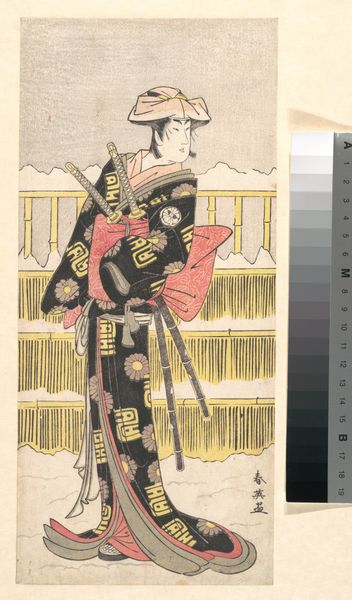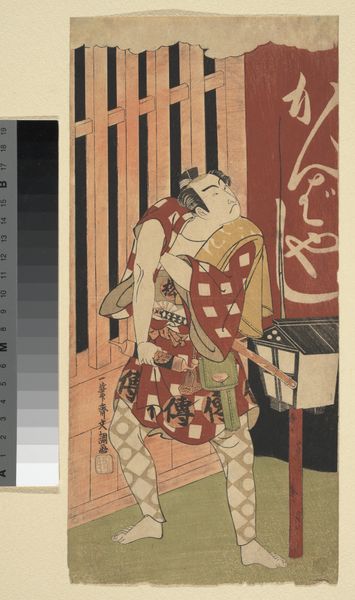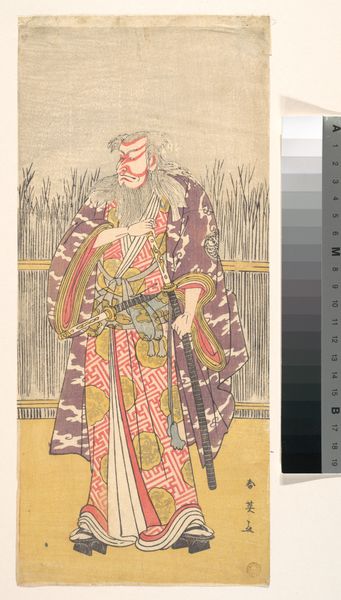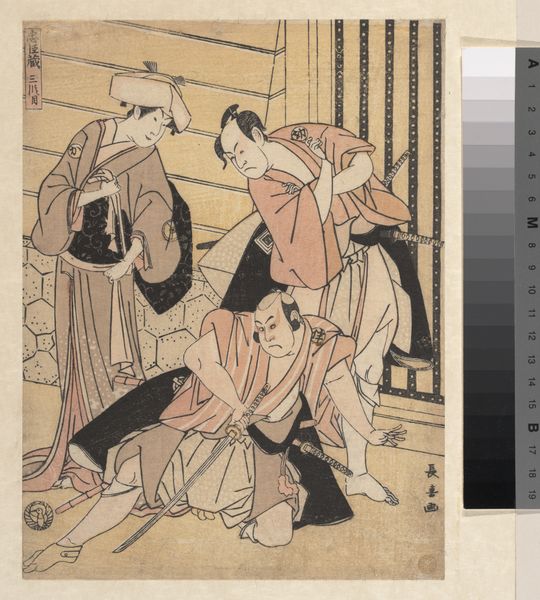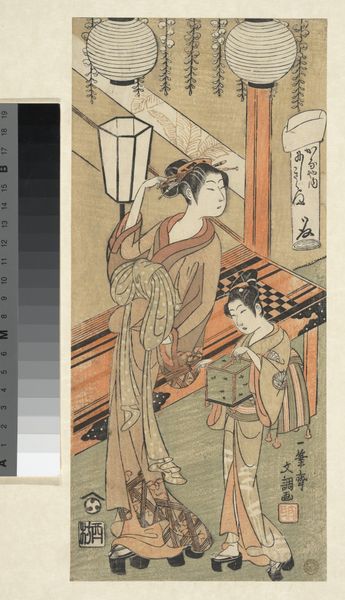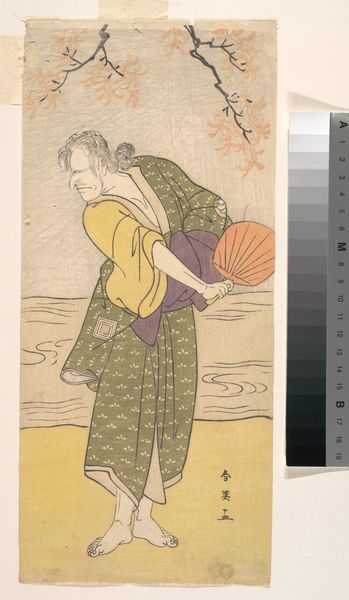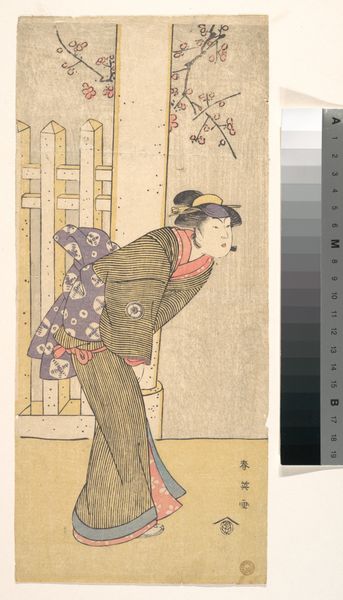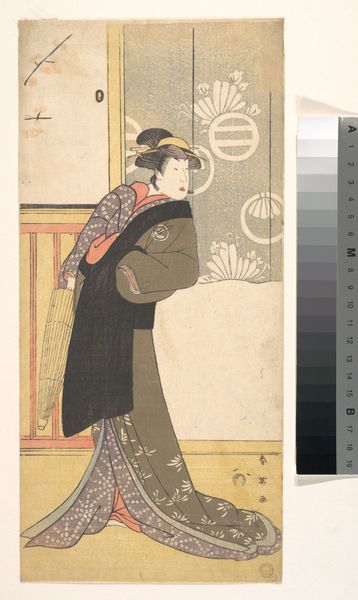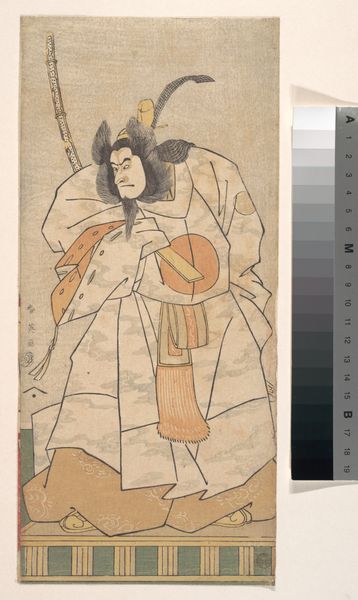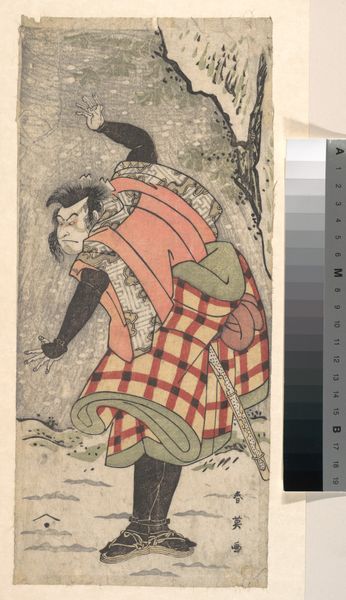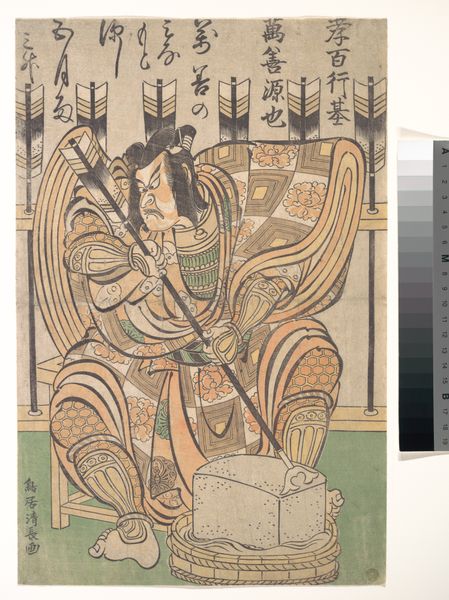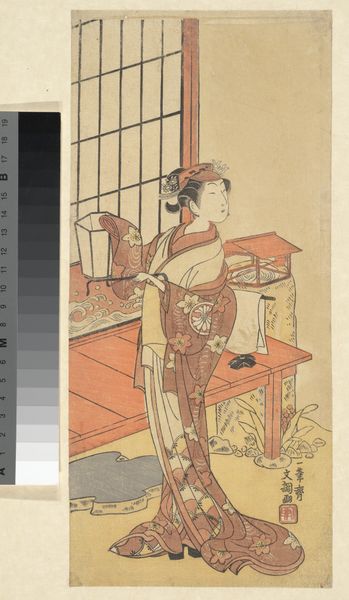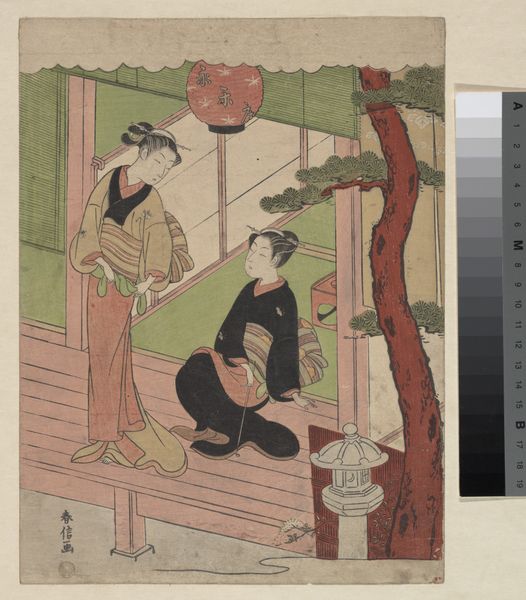
print, woodblock-print
#
portrait
# print
#
asian-art
#
ukiyo-e
#
figuration
#
woodblock-print
#
history-painting
Dimensions: Hosoban 12 5/16 x 5 1/2 in. (31.3 x 14 cm)
Copyright: Public Domain
Curator: Ah, there's a certain controlled energy to this piece that immediately grabs me. Is that, by any chance, Danjuro V? Editor: It is! We’re looking at "The Actor Ichikawa Danjuro V as a Samurai," a woodblock print by Katsukawa Shun'ei, dating back to 1785. It resides now at The Met in New York. I’m drawn to the figure’s expression. Intense, definitely not someone to cross. Curator: Exactly! Danjuro V wasn't just any actor; he revolutionized Kabuki. This print is a piece of cultural history, reflecting shifts in Edo society and the rising status of actors, even challenging samurai authority through the subversive theater they represented. Editor: I see it! The intensity… the weight. Though the palette feels a bit subdued—a little faded maybe—there's also a playful use of patterns here. Just look at those diamond tights! Curator: Playfulness that subverts societal norms! These prints were a key form of cultural commentary, allowing a broader audience to participate in the dialogue about class and identity through visual satire. The layered kimonos, too, carry symbolic meaning regarding status and profession. And of course, we can't ignore those two imposing swords, testaments to a shifting power dynamic. Editor: True, true. The swords are almost characters in themselves, aren't they? I feel a tension—as if he’s caught between worlds, not fully committed to one pose or emotion. Curator: He embodies liminality! His stance, coupled with the specificities of the Kabuki tradition which emphasized highly stylized movement, places this figure right at the crossroads of performative art, political expression, and social critique. It’s such an early moment of powerful artistic interpretation. Editor: Agreed! You know, looking at him again… he reminds me of how even a staged moment can capture a powerful sense of authenticity. Curator: I think that’s so spot on. It's the artifice revealing something profoundly true about the changing societal fabric of Japan at that time.
Comments
No comments
Be the first to comment and join the conversation on the ultimate creative platform.
